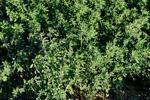A sure sign of summer is freshly harvested sweet corn. This vegetable is No. 1 in terms of acreage planted in Lancaster County, and probably many other counties in Pennsylvania as well.
While the normal harvest season for field-planted sweet corn starts mid-July, many growers plant sweet corn early in the season, under plastic, to have corn ready for customers for the July 4 holiday.
Besides higher customer demand for this early corn, another advantage is lower or absent populations of the three main worm pests of this crop — European corn borer, corn earworm and fall armyworm.
Of these three, corn earworm is by far the most important, as nothing will lose a customer faster than an ear of corn with a worm in it.
Corn earworm is generally considered a pest that needs to migrate into our area. While it might survive as far north as the Delmarva peninsula in a warmer winter, we generally do not see significant (necessary to spray for) populations of this pest until mid-to-late July in the Lancaster area. From that time on, populations can reach very high levels, frequently necessitating spray intervals as short as three days to keep ears worm-free and customers happy.
One problem with these later season sprays is that they have the potential to be damaging to our pollinator population. I have often seen bees collecting pollen from sweet corn tassels early in the day, particularly later in the season, when most other plants have completed flowering and pollen is harder to find. Combine this increased pollen collecting with the growers’ need to increase the number of sprays necessary to protect the ears from corn earworm and you have a challenging situation to manage.
Managing Worms
There are two solutions that I can see to solve this dilemma. First would be the use of drop nozzles on the spray boom. This would reduce or eliminate any insecticide reaching the tassels and thus eliminate bee exposure to applied insecticides. But this option would require more careful management on the part of the grower. You will need to be sure that the nozzles were at the proper height to ensure coverage of the silking ears. Height adjustments will almost certainly be needed to adapt to the changing stalk height from early- to mid- and full-season varieties. Water volumes and nozzle types will also need to be selected to ensure good coverage of the ears. While I am certain that there are some growers using this method, I will admit that I could not take you to one if you asked me right now. I generally just know growers that use boom sprayers over the top of the stalk, as well as growers using mist blowers from the side. Both methods will result in insecticides reaching the tassels.
To manage this latter situation, the second solution is careful insecticide selection. Whenever possible, use materials that have moderate to low bee toxicity ratings. In the Mid-Atlantic Commercial Vegetable Production Recommendations, there is a column in the insecticide tables that gives a rating for bee toxicity. Selection of products with a low rating would have the least impact on bees. Products for worm control that fit this category include Intrepid Edge, Coragen and Vantacor. It is my understanding that Vantacor, a new insecticide, is being packaged in smaller containers which certainly would be more grower-friendly to those with smaller acreages of sweet corn.
Insecticides with moderate ratings for bee toxicity include Blackhawk and Radiant. I encourage you to consider incorporating these insecticides into your sweet corn worm management program.
One final note: While I mentioned that corn earworm is generally not found in numbers that require sprays until mid-July, I need to mention that there always seem to be some moths of this pest in our area at this time of year. In fact, we had some corn earworm moths in our IPM traps when we checked them on Monday. While the numbers were very low (less than one moth caught per night) these moths are going to be very strongly attracted to that early planted sweet corn I mentioned earlier in the article. These plantings are silking now, which is where the female moth goes to lay her eggs. Frequently, I have had growers of early-planted sweet corn tell me that they (or worse, their customers) found a worm in an ear of corn. While the numbers are very low, if you have early sweet corn I recommend that you make a few insecticide applications to protect your ears from corn earworm damage, starting at silking, especially if your customers are not tolerant of any infested ears.
The Link LonkJune 17, 2021 at 05:05PM
https://ift.tt/3wz7fmt
Worm Watching During Sweet Corn Season | Main Edition | lancasterfarming.com - Lancaster Farming
https://ift.tt/3gguREe
Corn



No comments:
Post a Comment